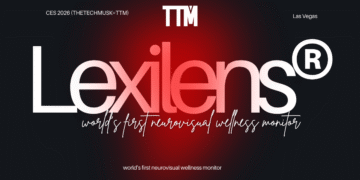We all know what Netflix is, right? But how many of you know the fact that they started as a DVD rental company? Yes, they did. Well, they now are the largest media service, provider. How many do they serve? Well, according to Statista, more than 207 million people are paid subscribers of Netflix. Out of the whole count, around 74 million people from the US and Canada, hold the largest portion of the global subscriber base.
But how a DevOps Strategy helped this huge service company? Glad you asked. With the help of DevOps, Netflix was able to create and deploy software, features, and services that were once unimaginable. Let’s have a dip into a conversation then.
Netflix: Problem

In the initial phase of Netflix, they were using a development practice called Monolith. If any of you is not aware of what the monolithic approach is, let me guide you. Monolith is a system where all the codes are written at once. That means, if you have software that will serve you 10 features, in a monolithic system, you will write 10 features altogether first, then will proceed to deployment.
The monolithic approach is quite popular. However, it has a huge drawback. Complexity! Software gets bigger and bigger and it turns into a lot more complex coding. This is the exact problem that Netflix faced; extremely complex code development.
As Netflix was grabbing more and more subscribers, their system was getting more and more complicated. Whenever a new bug was noticed, it took days to write the proper code. Also later took days to go for operation. If the operation failed, again the whole process started to repeat at a similar pace. For a company that is growing rapidly, it is a huge concern as well as a risk to continue with the same approach.
Netflix: Solution – DevOps

Due to huge complications in the monolithic approach, Netflix started to move to DevOps. They moved to an AWS cloud-based architecture. But why this move?
Well, as they moved to DevOps, or Development + Operation system, their both departments merged. Because of this, they can develop, check and deploy services together. Here, there is no need to wait for the development team to write another long code again which may take several days to complete. Afterward, it also eradicates repeating scenarios of failure, if any occurs during the deployment. As a result of DevOps, they were able to enhance the pace of the development operation.
But how do they do that? To solve this problem, they have built two tools.
Tool 1: Chaos Monkey
Have you ever had a chaotic elder sibling? Yes, that one who creates problems for no reason. We sure did have fun memories with them, indeed. Take Chaos Monkey just like that. It creates situations where a server may turn down, or any other facility, instantly!
Just imagine, you’ve been peacefully working on a server and suddenly everything tunes off. What a treat! What should you do now? Yes, to find solutions. This is exactly the main goal of the tool called Chaos Monkey. This allows any of the team members to be always ready to fight against any possible worst-case scenarios. That is so in the most unfavorable environment. What are the benefits?
- Top class application development
- High-resilience systems
- Stable application system
In the face of Chaos Monkey, the DevOps strategy thrived. The system becomes more efficient and productive as a result of this tool.
Tool 2: Titus
Titus is a container management tool. The procedure of Titus is very simple: make containers of standardized units of package software. Like a series of little units which form a whole. Now what Titus does will keep you mesmerized. The main job of Titus is to simply run the existing application inside the container. Here nothing will be changed inside.
If you even scanned your whole computer for possible virus threats, you’ll know how long it takes to complete the whole take. However, if you scan each disk, the process speeds up radically. The same thing goes here. Titus lets you run your whole application in a smaller container which will surely take much less time, compared to running in the whole system. This allows faster results while eliminating complexity issues, thus enhancing efficiency.
Another interesting fact about Titus is that it is integrated with AWS or Amazon Web Services. What these services do is to make the whole process cost-effective as well as highly productive. Netflix utilizes Titus to incorporate recommendations with the content system since it is ASW-compliant.
So how does Titus help? Well,
- Deploy a code within 2 minutes
- Can release applications frequently

Netflix wasn’t performing well with its monolith system. Their struggle became clearer and clearer as their number of subscribers started to sky-rocket. Turning to DevOps was the key point that helped them deal with such a high volume of subscribers, in a much simpler manner. Today most of the populations of the world are dependent on Netflix. Yes, to the company which initially was a DVD rental corporation. So what are the benefits that DevOps serves?
- It eliminated the communication silos between the development and the deployment departments
- It helped the product to have much better quality, due to continuous testing and rechecking.
- Development of services has become faster than ever before, thanks to the cooperation of developers and deployers.
- Build an extremely reliable service that can work against any possible failure at any time.
Final Verdict
In the era of highly dependable web services, the systems need to be extremely dynamic to fight against any of the possible scenarios. However, to build a dynamic application, DevOps is one of the best systems that you can use for your business. Based on microservices, this approach lets you work on a smaller scale where you can develop, test, and deploy, all simultaneously.
Therefore, DevOps Strategy or you can say a well-designed plan that should be formulated which can help you to build the system. With the help of DevOps, you will be left with highly resilient software, which can offer newer features, benefits, and services with the speed of a sports car.

























